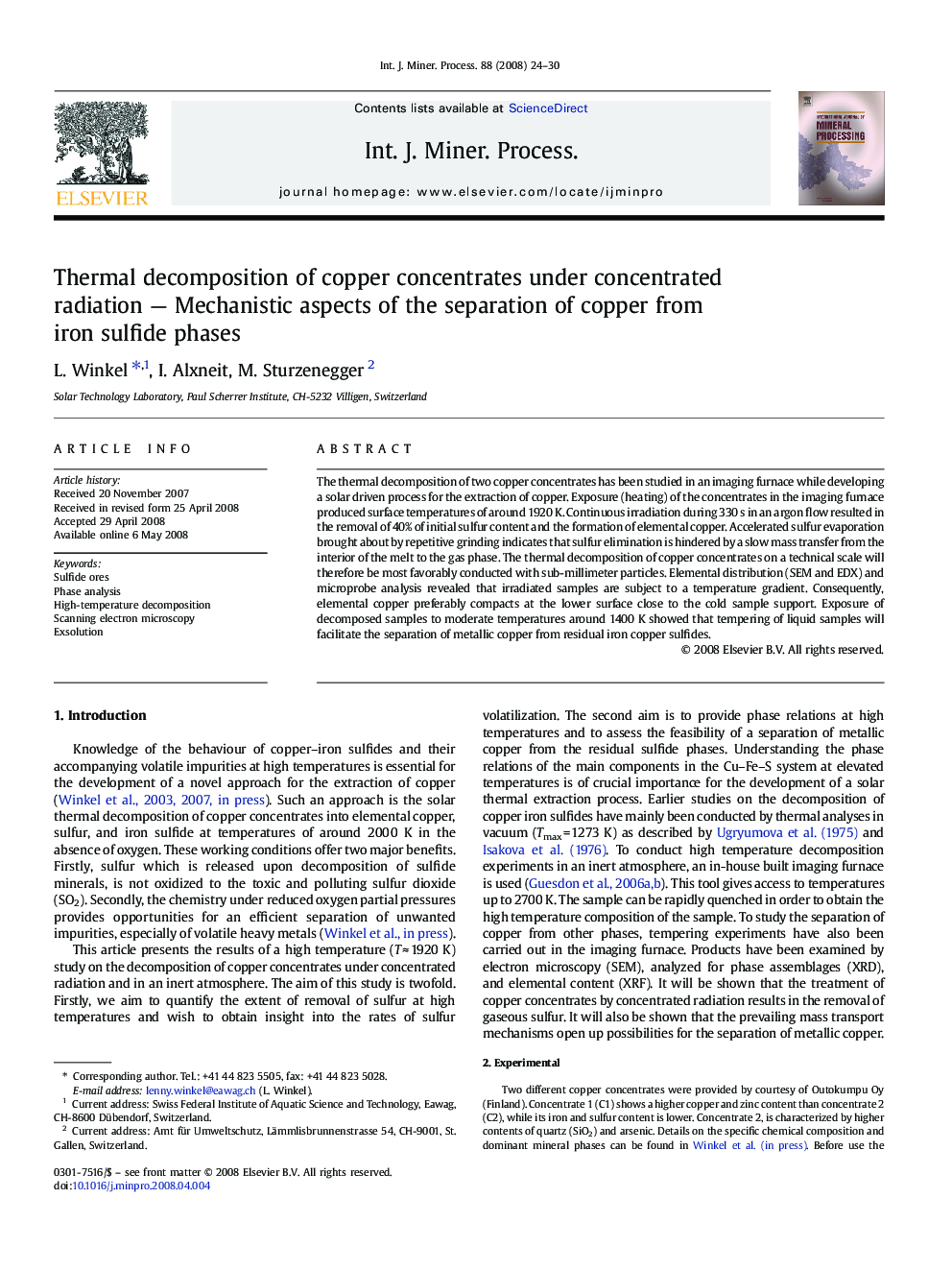| Article ID | Journal | Published Year | Pages | File Type |
|---|---|---|---|---|
| 214460 | International Journal of Mineral Processing | 2008 | 7 Pages |
The thermal decomposition of two copper concentrates has been studied in an imaging furnace while developing a solar driven process for the extraction of copper. Exposure (heating) of the concentrates in the imaging furnace produced surface temperatures of around 1920 K. Continuous irradiation during 330 s in an argon flow resulted in the removal of 40% of initial sulfur content and the formation of elemental copper. Accelerated sulfur evaporation brought about by repetitive grinding indicates that sulfur elimination is hindered by a slow mass transfer from the interior of the melt to the gas phase. The thermal decomposition of copper concentrates on a technical scale will therefore be most favorably conducted with sub-millimeter particles. Elemental distribution (SEM and EDX) and microprobe analysis revealed that irradiated samples are subject to a temperature gradient. Consequently, elemental copper preferably compacts at the lower surface close to the cold sample support. Exposure of decomposed samples to moderate temperatures around 1400 K showed that tempering of liquid samples will facilitate the separation of metallic copper from residual iron copper sulfides.
